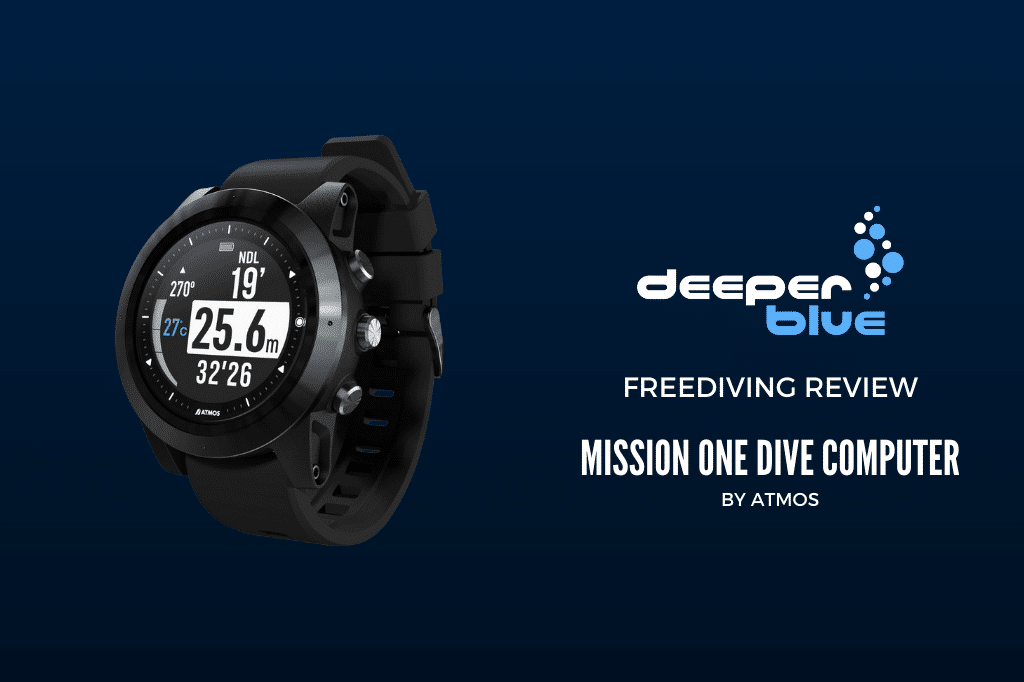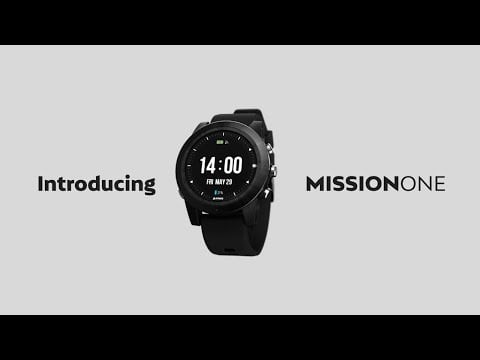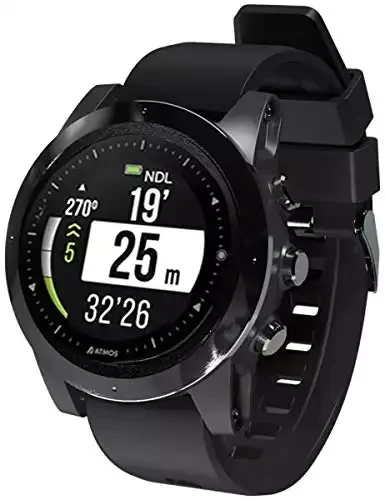I had recently moved to Xiao Liuqiu, Taiwan to work as a freediving instructor, and one of the first things I learned was that all the buoys that I needed to connect my surface line to were 3-5m (10-16ft) underwater. This meant that I had to hunt for these buoys while I had students with me, which was not always a problem if the visibility is good. When it was a bit murky, I had to depend on unreliable visual cues from the surface and diving down continuously to try to find a particular buoy.
As I complained about this to my fellow dive instructor, she showed me her ATMOS MISSION ONE dive computer (the same one that is mentioned in the Top Freediving Computers of 2020) and the handy GPS features she uses to locate her buoys. I decided that I must have one for myself!
First Impressions
Out of the five impressive colors to choose from, I decided to order the black MISSION ONE with the black bezel to be as neutral as possible so I could wear it on my non-diving days as well. I really appreciate the look of the watch: it is stylish, simple, not too flashy, and very suitable for everyday use.
The screen is large and the numbers are clearly visible. Multiple backlight settings make this dive computer very easy to read in the sunlight, and the backlight in the dark is very powerful. There is no need to press a button for the backlight to turn on, it activates with a turn of the wrist while in dive mode.
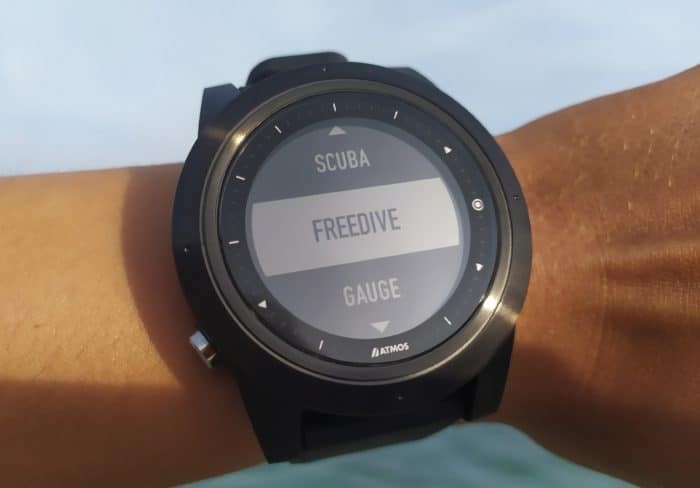
I also love that the MISSION ONE is easy to use, and seriously intuitive. I spent a lot of time figuring out how to navigate through menu functions on past dive computers, so I really enjoy that the menu is clear and the buttons are put in logical places. There are five watch modes to choose from, including freediving mode, multiple scuba modes, and the standard watch mode.
GPS and Compass
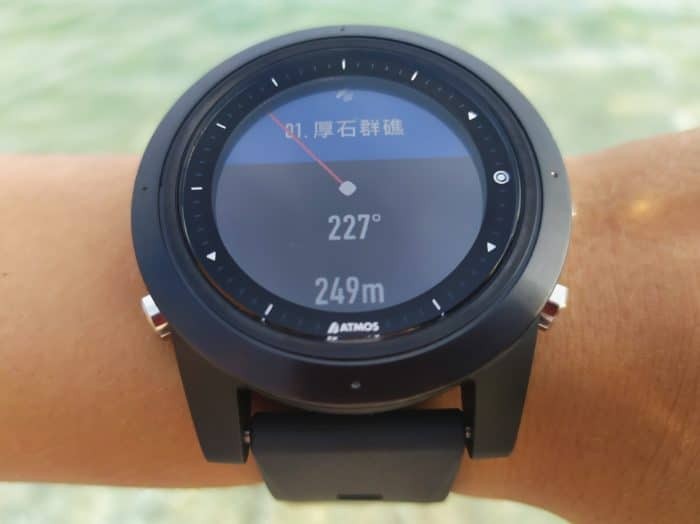
The GPS was the main feature that drew me to the MISSION ONE. As most of the buoys in Xiao Liuqiu, Taiwan are underwater, I immediately set out to mark my first dive location. Adding a dive site is very simple, and you can even personalize the name of the dive site on the ATMOS™ App. You can search for nearby dive sites that other users have shared on the app, which is terrific for finding notable dive spots nearby, and input GPS coordinates yourself to add a dive site without physically having to go there.
Locating a dive site after adding it is amazing. First, the GPS has to be located, which can sometimes take a while, but is easily remedied by connecting it to your smartphone and locating the GPS from there instead of directly from your MISSION ONE. The screen shows my location as a white dot, the dive site location as a red dot, and a clear red line guiding me in which direction to go. It even has the distance displayed and updating in real-time, so I can see exactly how far away I am at all times.
The locations are quite accurate; even in bad visibility, I am usually able to find my marked underwater buoys thanks to the GPS feature!
Notifications, Alerts, and Logs
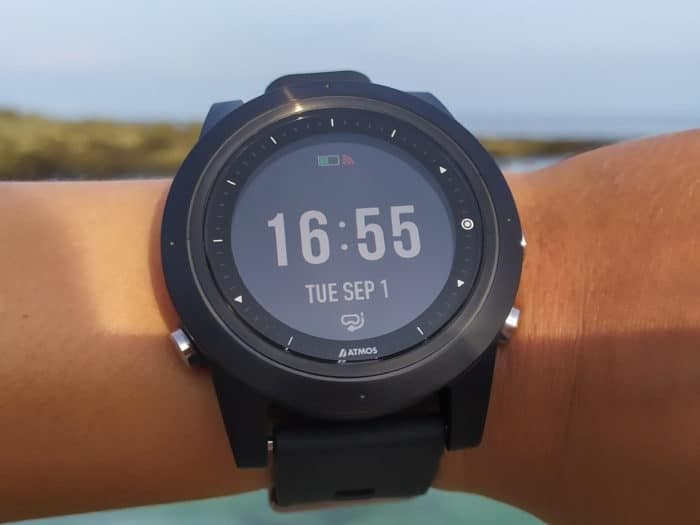
During a dive, the MISSION ONE displays current and maximum depth, dive time, water temperature, and ascent rate. I really love seeing the ascent rate, but it is only viewable in real-time; you cannot see the ascent rate in the logbook. There is also a surface interval alarm that is visual and haptic (vibration), which is an excellent feature for keeping safe from decompression sickness, and takes away the diver having to calculate the dive time/depth and count down the minutes. There is also a stopwatch feature that comes in handy for static training, and you can even see sunrise and sunset times on the dive computer itself!
One of my other favorite features is the depth alarm. You can set up to ten on the MISSION ONE, and you can choose between an audible alarm, haptic alarm, or both at the same time. I could never hear my old dive computer’s alarm at depth when wearing it on my wrist, so I had to tuck it into my hood when I trained. However, the vibration from the MISSION ONE can clearly be felt through my wetsuit, which is an indispensable feature for me.
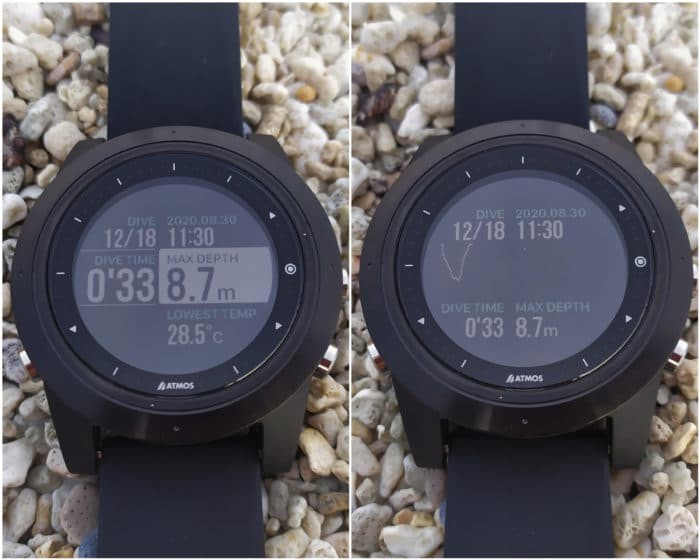
The dive log records up to 100 dives and can be viewed directly from the dive computer with all the relevant information displayed. You can also connect to the ATMOS™ App for iOS or Android and save it to the app itself, which is convenient if you like keeping track of your dives. The MISSION ONE also is something of a smartwatch, and if connected by Bluetooth to your phone, can display notifications from Facebook Messenger, Whatsapp, WeChat, and incoming call notifications, among others. This does shorten the battery life, but is not essential to me, so I keep it off.
Battery Life and Connectivity
I was wary of getting a dive computer with a rechargeable battery since I dive a lot during the busy season as an instructor. The MISSION ONE was a pleasant surprise! I had no trouble getting at least 2 full days of diving with 2 open water sessions each day out of one charge, and over a week of battery life just on watch mode without a Bluetooth connection to my phone. Updating firmware is very simple to do over Bluetooth.
Final Thoughts
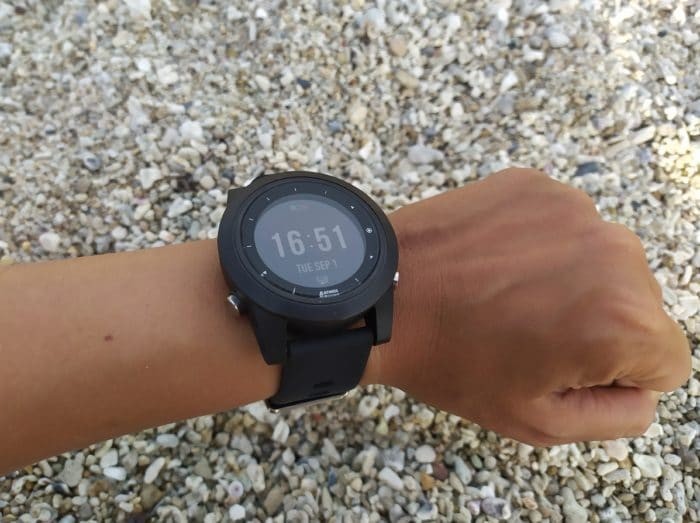
The price point on this dive computer is a really strong selling point for all of the features on the MISSION ONE. I find the GPS, haptic depth alarms, and surface interval alarms absolutely indispensable as a freediving instructor, and find myself showing the MISSION ONE off to all of my students and fellow instructors. Although I received a free unit in exchange for this review, I would absolutely purchase it on my own. I can say with absolute certainty that I highly recommend the ATMOS MISSION ONE for freedivers!
Key Features
- Rechargeable Battery
- Vibration, Visual, and Audible Alarms
- Constant backlight
- Intuitive User Interface
- Multi-Lingual
- On-Screen Digital Compass
- Mark Entry and Exit GPS Locations
- Surface Dive Spot GPS Guidance
- Digital Logbook (ATMOS™ App for iOS/Android)
- Smartphone Notification
- Firmware Updatable
Technical Specs
- Air / Nitrox / Freedive / Gauge / Off Modes
- 10ATM (100m/328ft) Water Resistance
- Measurements – 50.5 x 50.5 x 18mm
- Weight – 90g/3.17oz
- 2” sunlight-visible, transreflective, hi-resolution color display
- Stainless steel 316L Bezel and Button Material
- Languages – EN, KO, JA, ZH-CN, ZH-TW
- 100 dive Logbook Memory
- Metric and Imperial Units
- 24mm Silicone Watch Band
- 15-40 hour Diving Battery Life / 15 Days in Time Mode
Price
- Atmos Mission One Dive Computer – $449.95 USD / €383.22 EUR / £344.97

